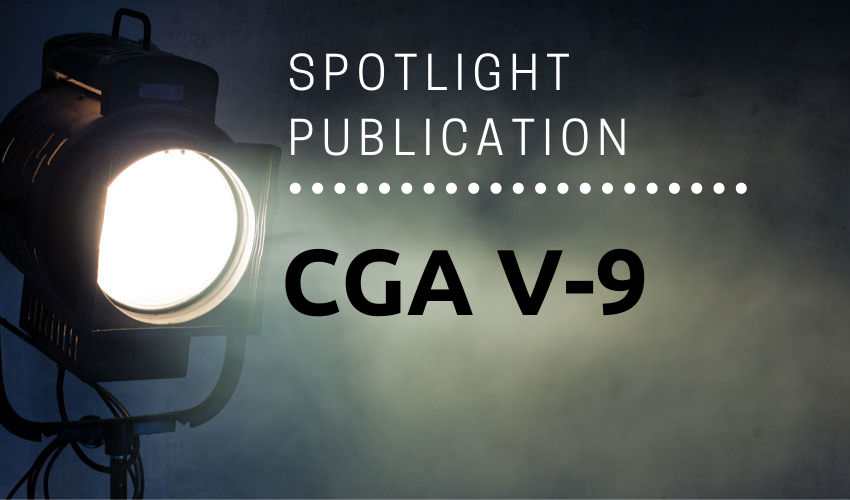CGA’s V-9 Publication Defines Key Factors for Compressed Gas Cylinder Valve Safety
November 5, 2020
The Compressed Gas Association (CGA) has long recognized the need to promote public safety in the use of cylinder valves. In November 2019, we published the 8th edition of CGA V-9, Compressed Gas Association Standard for Compressed Gas Cylinder Valves. This standard defines factors that contribute to the safe design, manufacture, and use of compressed gas cylinder valves.
CGA V-9 is generally intended for valves for compressed gases packaged in U.S. Department of Transportation (DOT) and Transport Canada (TC) cylinders.
Cylinder Valves – Overview
Cylinder valves are used on compressed gas cylinders and are opened or closed as needed during filling operations or for the withdrawal of product from the cylinder. Cylinder valves provide on/off control of the gas from the cylinder and are not intended to be used as throttling or flow control valves. Manual or remotely actuated operators (integral or attached to the valves) are used to open and close the valves.
Cylinder valves are designed for use in a wide variety of gas services and for a broad range of use pressures. Some valves are limited to a service pressure of 500 psig, while others can be rated for a service pressure of 7500 psig or higher.
Compressed gases supplied in cylinders are diverse in their chemical composition and properties. For example, some are oxidizers, some are flammables, and some are inert. Gases vary in degrees of corrosivity, toxicity, and pressure, and exist not only in the pure state but also in a variety of mixtures. It is therefore a primary safety requirement of the cylinder valve that it is designed and tested for its intended use.
What’s Covered in CGA V-9
This standard covers compressed gas cylinder valve design, selection, manufacture, and use, including performance requirements such as operating temperature limits, pressure ranges, and flow capabilities. It also includes requirements such as materials, inlet and outlet connections, cleaning, qualification and production testing, maintenance, and reconditioning.
In addition, CGA V-9 includes guidelines and requirements for the design, material selection, testing, and marking of cylinder valve protection caps.
The standard also provides a thorough listing of valve types, their application and limitations, and drawings of various valve types.
The full Table of Contents may be downloaded for free from the CGA V-9 publication details page on the CGA portal.
CGA V-9 Now Aligned with ISO 10297
In a significant development, edition 8 of CGA V-9 brings the revision cycle of this safety publication from the Compressed Gas Association into alignment with ISO 10297, Gas cylinders—Cylinder valves—Specification and type testing.
The following valves shall meet the requirements of ISO 10297, Gas cylinders—Cylinder valves—Specification and type testing, as well as the additional requirements given in the CGA V-9 standard:
- cylinder valves intended to be fitted to refillable transportable gas cylinders
- main valves (excluding ball valves) for cylinder bundles
- cylinder valves or main valves with an integrated pressure regulator (VIPR) for nonmedical purposes
- cylinder valves for pressure drums
- cylinder valves for tubes (excluding ball valves) not mounted to a chassis or framework
Required Valve Compliance
CGA V-9 does not prejudice the continued use of valves in service or in inventory at a manufacturer’s or user’s site that were manufactured before the effective date of this standard, provided the valves are identifiable to the original valve manufacturer and traceable to a manufacturing period. The identifying marks shall be permanent and visible on an installed valve.
The effective date of this standard is three years from the date of the publication of this edition, which was November 15, 2019. Valves manufactured on and after the effective date of this standard shall be in compliance with this standard.


